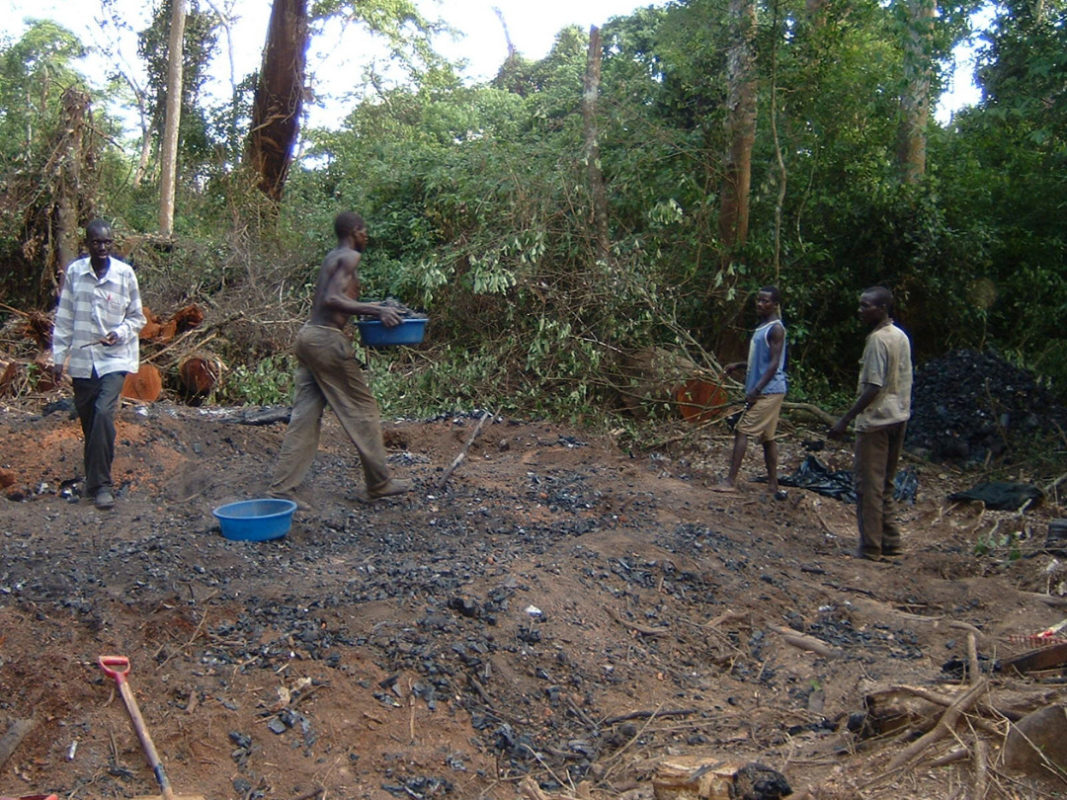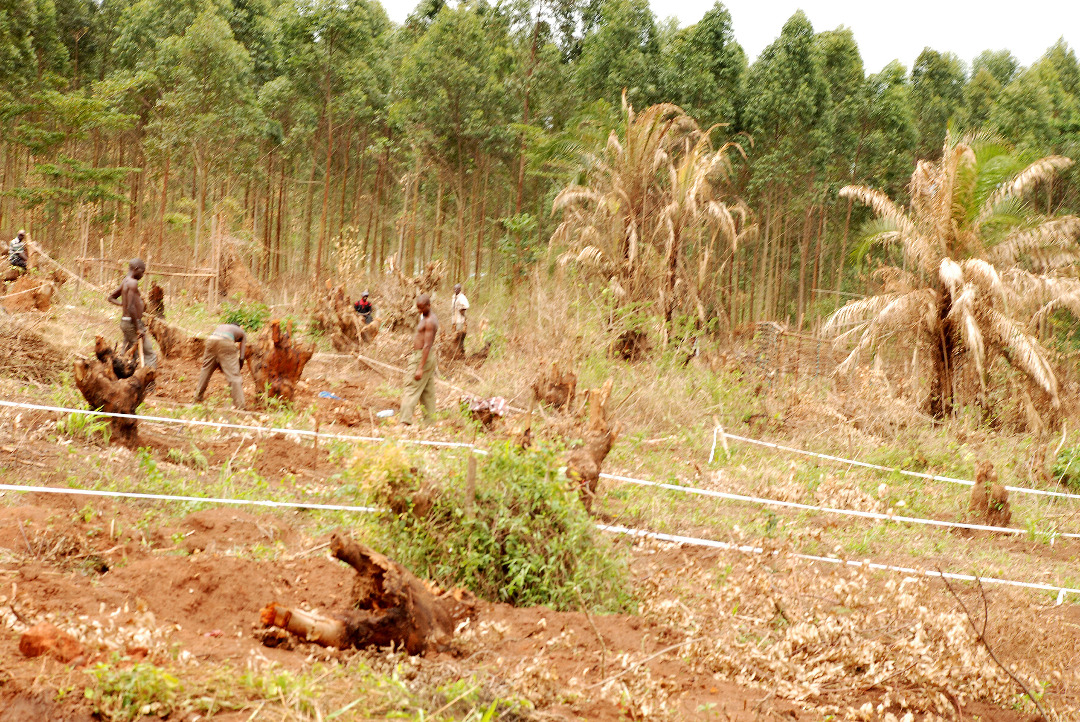Fears are growing over the fate of East Africa’s air quality and forests as the region’s population rapidly expands and continues to rely heavily on the use of biomass fuels like charcoal.
“The grim picture is that high levels of poverty will continue to push more people in the region into the burning of biomass (wood, charcoal, crop residues, and dung) to meet basic needs for household energy,” said Derrick Mugisha, a Ugandan environmental scientist.
The likely upshot will be increased exposure to biomass smoke, health officials estimate. The World Health Organization has warned that frequent biomass smoke exposure can trigger health impacts such as pneumonia, tuberculosis and chronic obstructive pulmonary disease.
East Africa’s population is growing two times faster than the global rate of 1.19 percent and demand for traditional biomass energies has risen significantly in the region in the last few years. Residents in the region typically have little access to clean, safe and modern cooking fuels and technologies, contributing to an increased reliance on solid wood fuels and biomass energy that is expected to continue into the future.

Biomass energy constitutes about 70 percent of the population’s overall energy needs in Kenya, while more than 95 percent of Tanzanians depend on wood-based energy. In Uganda, biomass fuel accounts for about 90 percent of residential energy consumption.
Access to clean cooking fuel remains very limited in sub-Saharan Africa, increasing only slightly from 15 percent of the population in 2015 to just 17 percent in 2018. Since 2015, only 25 million people have gained access to clean cooking in the region, while 900 million remained without access in 2018 as population growth outpaced provision efforts.
In Sub Saharan Africa, almost 490,000 premature deaths per year are related to household air pollution, with women and children the worst affected.
Time for a change
“In many ways, the heavy dependence on biomass fuels in East Africa has led to the unsustainable harvesting of fuelwood and overexploitation of forests and woodland resources, thereby accelerating deforestation and its attendant climate change effects,” said environmentalist Phiona Wamukota.

The World Meteorological Organization (WMO) recently warned that warm temperatures and other impacts of climate change are hitting Africa hard and slashing the continent’s crop yields. In response, East African environmentalists have stepped up their call for a fresh start in the way the region addresses the issues that contribute to climate change. Rainfall deficits in 2018 and 2019 led to crop failures in Kenya and Uganda.
The demand for biomass fuel isn’t the only cause of deforestation, however. There has also been an exponential growth in forest clearing to harvest timber and make way for livestock grazing and farming. Using genetically modified seeds that produce higher yields could reduce the pressure on forests to accommodate agriculture.
A grim future for forests
Current estimates on the region’s forest cover loss do not make for pleasant reading.
Tanzania reportedly has the highest rate of deforestation in the world, with recent estimates showing that the country loses 483,859 hectares of its forest ecosystem to charcoal production annually.
Scholars Nike Doggart, Theron Morgan-Brown and Emmanuel Lyimo, who recently studied the connection between agriculture and deforestation in Tanzania, note that without a deliberate policy shift, Tanzania may likely follow the trajectory of other countries, reducing its natural forest cover to just 15 percent with associated losses of its unique biodiversity and other ecosystems.
Uganda’s forest cover is also rapidly shrinking due to a combination of forces. One example is the recent controversy over the 900-hectare Bugoma forest, one of the country’s most fragile forest ecosystems. Some 9.24 square miles of the forest were recently cleared to grow sugar cane.
Uganda has an average annual natural forest loss of 2 percent, one of the highest in the world, according to the 2019 Uganda Water and Environment Sector Performance Report.
The Kenya Forestry Services estimates that the country is currently losing over 50,000 hectares of forest each year through deforestation, which translates to a forest cover loss of 1.13 percent.
“Biomass burning is a major carbon polluter and if action is not taken, there will be an exacerbation in the region’s greenhouse gas emissions. The argument that biomass is a sustainable energy resource and a carbon neutral fuel that contributes less to climate change is still a moot point,” said Sam Owach, environment management specialist.
Governments need to work on improving access to affordable, reliable and modern energy, as required by the United Nations Sustainable Development Goal 7, Owach said. “Governments in the region also need to confront the issue of high population growth because it presents challenges for achieving the 2030 agenda for sustainable development and also a high quality of life for their citizens.”
Efforts to control high population growth rates
Recent UN projections estimate Kenya’s population will grow by around 1 million per year – 3,000 people every day – over the next 40 years and will reach about 85 million by 2050. Uganda’s population, meanwhile, is projected to reach 50 million people by 2025 and 102 million by 2050. According to Tanzania’s five-year development plan, the country’s population was growing at 2.7 percent per annum, more than twice the global average of 1.2 percent, and above the African average of 2.5 percent.
In recent years, steps have been taken to try and rein in the region’s high population growth rates.
Kenya is focusing efforts to expand equitable access to quality family planning care at the country level, besides making a family planning budget allocation, said Dr. John Masasabi Wekesa, acting director general of the country’s Health Ministry. The country’s population policy aims to reduce the number of children a woman has over her lifetime from five in 2009 to three by 2030.
The government of Tanzania has committed to increasing the availability of modern contraceptive methods from 40 percent to 70 percent by 2020 at all levels of its health system, while Uganda has also committed to scaling up the use of modern family planning methods to ensure that women can choose when to have children and how many.
